You cannot put a price on your skaters safety.
Please do not place your skaters on the ice with inadequate equipment.
All of the items listed below can be purchased from Sandi Vyse at ilovespeedskating.com
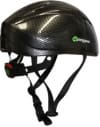 A skate blade should not be able to penetrate any ventilation holes in the helmet. Safety headgear which has a seal of certification meeting the actual ASTM F 1849 Standards and which must be securely fastened under the chin. Bike helmets are not acceptable. Prevent major and minor head trauma and traumatic brain injury due to impacts with ice, boots, blades, bodies, boards and crash pads. A helmet must be worn for all on-ice activities. It must be securely fastened under the chin at all times.
A skate blade should not be able to penetrate any ventilation holes in the helmet. Safety headgear which has a seal of certification meeting the actual ASTM F 1849 Standards and which must be securely fastened under the chin. Bike helmets are not acceptable. Prevent major and minor head trauma and traumatic brain injury due to impacts with ice, boots, blades, bodies, boards and crash pads. A helmet must be worn for all on-ice activities. It must be securely fastened under the chin at all times.
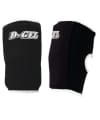 Prevent puncture and blunt force impact wounds to the knees. Full frontal knee coverage providing complete coverage of the patella. Made of puncture resistant (e.g. Kevlar or Dyneema) and impact absorbing (e.g. high density foam) material. Protection may be worn over a skater’s skin suit or it can be integrated in the suit. Knee pads should be thick to provide adequate protection and should be snug fitting so that they do not slide down. Rigid style roller blade or skate board knee pads are not recommended. Volleyball knee pads are the best.
Prevent puncture and blunt force impact wounds to the knees. Full frontal knee coverage providing complete coverage of the patella. Made of puncture resistant (e.g. Kevlar or Dyneema) and impact absorbing (e.g. high density foam) material. Protection may be worn over a skater’s skin suit or it can be integrated in the suit. Knee pads should be thick to provide adequate protection and should be snug fitting so that they do not slide down. Rigid style roller blade or skate board knee pads are not recommended. Volleyball knee pads are the best.
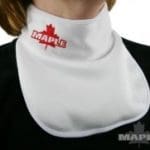
Prevent cut and puncture wounds to the neck area, especially in the areas of the major arteries. All skaters must wear neck protection covering the lower half of the full circumference of the neck and covering all soft tissue below the chin to a point extending below a line joining the armpits at the front of the body. neck protection must be made of Kevlar, Dyneema, or ballistic nylon.
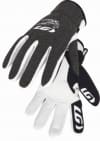
Prevent cut and puncture wounds on the hands from blades. Gloves or mitts must be non-woven and made of a cut and water resistant material. Full leather gloves or a synthetic glove which offers an equal or superior level of cut and puncture resistance to leather must be worn.
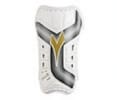
Prevent cut and puncture wounds along the shin from blades, as well as protection from hitting hard objects. Skaters must wear hard plastic or built-in cut and puncture resistant material with some impact energy absorption. Full frontal shin coverage is from within 2.5 cm of the top of the boot to within 2.5 cm of the bottom of the knee protection. Protection may be worn over/under a skater’s skin suit or it can be integrated in the suit.
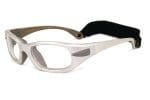
Prevent eye injuries resulting from ice chips or a collision with a blade or other object.Shatter-resistant glasses or a complete visor are required for all skaters. All glasses must be held in place by a strap. Clear or yellow lenses are recommended. The higher the level of shatter resistance and the more extensive the protection, the better.
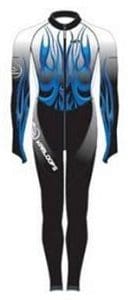
Cut resistant skinsuits Required – Coyotes and up
Skinsuits are recommended as they allow for full freedom of movement. There are two types of skinsuits. One with cut-resistant protection (Kevlar) built into the suit and one without. Both should have built in knee pads and shin guards. Skaters at the Provincial level (ages 12 & up) are required to wear cut-resistant skinsuits or undergarment. All skaters are encouraged to wear them. Skaters must wear long sleeved clothing and wearing bulky jackets or jeans is not recommended. Generally, several thin layers are better than one bulky garment . The clothes should allow freedom of movement and conform to the body shape so as not to cause unnecessary wind resistance. All Coyotes & up are required to wear either a cut proof undergarment or a Kevlar skinsuit. No exceptions.
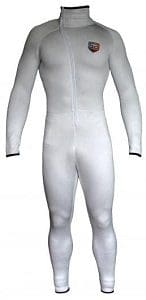
Prevent cut and puncture wounds on any other part of the body not already covered by other protective equipment. All skin below the mid-line of the neck must not be bare. Skaters participating in events sanctioned as SSC Championships and/or as Selection/International competitions must wear cut resistant clothing meeting or exceeding the minimum standards established by the ISU. The more cut and puncture resistance, the better. Skaters at the Provincial level (age 12 & up) are required to wear cut-resistant skinsuits or undergarment. All skaters are encouraged to wear them.
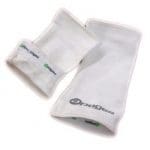
Prevent cut and puncture wounds of the Achilles tendon from blades during the thrust phase of the stride. When no cut resistant suit is worn, a cut and puncture resistant anklet made of Kevlar or Dyneema must be worn on both legs, covering the legs from the tops of the boots to 10 cm above the tops of the boots. Extend coverage higher up the legs, as desired. The more cut and puncture resistance, the better.
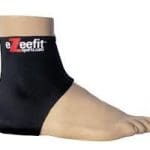
Form fitting pull-on anti-blister booties that allow your foot to grip your footwear better, yet offer protection from rubbing and blistering. Highly recommended

Skates should fit snug enough to prevent any movement inside the skate and have strong ankle support. The rear and front tips of all skate blades shall be rounded to a minimum radius of 1cm. Our club has skates available to rent during the skating season.
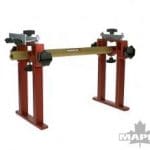 Speed skates are sharpened by hand, using a jig and stone. Instruction sessions on how to sharpen your skates are held during the skating season. If you rent club skates you are responsible for sharpening them throughout the season. The club has jigs available for club members to use.
Speed skates are sharpened by hand, using a jig and stone. Instruction sessions on how to sharpen your skates are held during the skating season. If you rent club skates you are responsible for sharpening them throughout the season. The club has jigs available for club members to use.
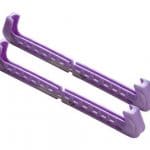
Skate Guards must always be worn when not on the ice. Put your guards on before you step off of the ice and do not walk on the toes of the skates, walk on the flat of the blades.
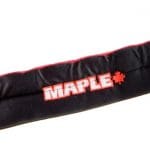
Use blade protectors while transporting your skates and store skates removed from your bag with blade protectors off.
